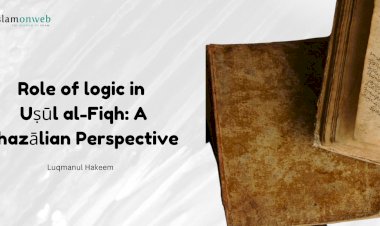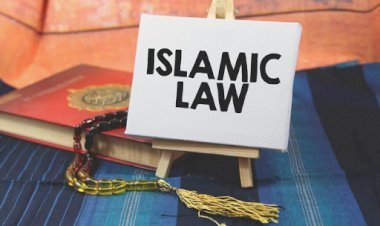“Harm Must Be Eliminated”: The Universal Islamic Legal Maxim - Part one
By Dr. Sayyed Mohamed Muhsin, Dr. Muhammad Amanullah and Dr. Luqman Zakariyah
What is Harm (ḍarar)?
By the survey of traditional texts of the four sunnī madhāhib, we can find many cases in which jurists analysed the definitions of harm (ḍarar).[1] Among many, the major indications of ḍarar could be summarised as opposite of benefit[2], infliction of harm on others[3] and infringement of others’ rights.[4] Notably, some other scholars also viewed harm as the infliction of emotional distress for the reason that pain is a common element in all sorts of harm.[5] Incorporating the various implications of harm, contemporary scholar Aḥmad Mawāfī defined it as “the violation of the legitimate interests (maṣlaḥah mashrūʿah) of one’s own or of others caused by the infringement of rights, abuse of power or due to negligence on the part of others”.[6]
Not all harms are worth of consideration, rather jurists have posited certain conditions to decide whether an action or inaction is considerable harm or not. The major conditions are as follows:
- The harm should be real.[7]
- The harm should be excessive (fāḥish).[8]
- The infliction should occur as a result of infringement or arbitrariness or negligence.[9]
- Infliction of Harm is on a Legitimate Benefit owned by the Right Owner.[10]
The Sharīʿah posits restrictions when people engage in activities or participate in procedures that impose risks to others. In Islamic law, the command of harm elimination falls in the category of the obligatory, and it is actualised by its prevention before its occurrence and by its elimination after its occurrence. The ‘no harm’ maxim embraces mainly four elements; (1) non-infliction of injury, (2) prevention of harm and (3) removal of harm (4) minimisation of harm.[11] The mentioned hierarchical order is notable in handling conflicting interests.
Also read: Introduction to Takaful Islamic insurance - part two
[12] Accordingly, killing a dying patient is not an ethical choice to benefit his or her organs for saving others as per the maxim “repulsion of an evil is preferable than achieving a benefit”.[13] Likewise, if somebody damages the property of someone else, the harmed party has no right to damage the same property of the wrongdoer, because it spreads harms. He can instead hold the wrongdoer liable for loss and injury. On the other hand, when someone transgresses the limits set by the law, he will be punished by retaliation or compensation even though they could cause personal harms, which is according to the maxim “inflicting private harms to prevent public harms is permitted”.[14]
Prohibition of something results from the Sharīʿah’s recognition of its harmful effects. As a general rule of thumb, whatever is prohibited by the Sharīʿah is inevitably considered as harmful. A widely accepted theory in fiqh is that harmful situations result from the performing of that which is prohibited and from the negligence of performing that which is commanded.[15] How does the Sharīʿah recognise different levels of harms and how do people determine the degree of severity of different harms in order to deal with them appropriately? It is based on the text of the Quran and the Sunnah. For example, the seven major sins are considered as causing significant harms.
Islamic Legal Maxim related to Elimination of Harm
The ‘no harm’ maxim is embedded with several distinct obligations and priorities; they change according to the situations. In Islamic law, the duty of non-maleficence tends to be preferred to beneficence on many occasions and, however, there are situations in which vice-versa is also applicable.
Maxim of harm elimination governs innumerable juristic cases and scenarios. Some of them include the option to return an object of sale to the seller due to defect in it (khiyār bi al-ghayb)[16], retaliation (qiṣāṣ), various forms of interdiction for consumer protection (ḥajr), liability for destruction (ḍamān), right of pre-emption in sale transactions for the safety of the neighbour and the partner (shufʿah), atonement fee (kaffārah), annulment of marriage contract due to physical deficiencies such as impotency and financial shortcomings such as bankruptcy and so on.[17]
Read it: Glad tidings from a revert to the world
Though the maxim in its final wording, which is al-ḍarar yuzāl[18] (harm must be eliminated) is not found in earlier fiqh texts, the jurists had explicated the ‘avoidance of harm’ as justification for allowing certain acts in their legal rulings.[19] According to some reports, al-Qāḍī Ḥusayn al-Marrūzī is the first known person to formulate this maxim in its final wordings.[20]
One of the most important evidence for the maxim on harm elimination is the ḥadīth which states that “no harm shall be inflicted (ḍarar) or reciprocated (ḍirār)”.[21] This ḥadīth enables us to draw multiple interpretations with living relevance to modern times. Regarding the difference between ‘ḍarar’ and ‘ḍirār’, some scholars are of the view that the latter is an emphasis of the former while a significant number of scholars hold that the latter has a different meaning altogether because giving it a new meaning is preferred over emphasising on an already existing meaning.
The diverse range of scholarly views could be classified under one of the following interpretations. (1) Both are synonyms and the latter is used as corroborative.[22] (2) Ḍarar refers to a single kind of harm while ḍirār refers to multiple kinds of harms.[23] (3) Ḍarar refers to initiating harm while ḍirār refers to reciprocating with harm.[24] (4) Ḍarar is the infliction of harm without intention while ḍirār is that with intention.[25] (5) Ḍarar is used as a noun while ḍirār is used as a verb,[26] and (6) ḍarar is used when harm begets benefit and ḍirār is used when neither the oppressor nor the victim gains benefit out of the infliction of the harm.[27]
Two phrases are most often cited when referring to harm elimination. They are: (1) “Harms must be eliminated” [28] and (2) “No harm shall be inflicted or reciprocated”.[29] Some scholars refer to “Harms must be eliminated” as the main maxim on harm elimination and consider the ḥadīth “No harm shall be inflicted or reciprocated” as legal evidence for it. Other scholars consider the ḥadith as the universal maxim on harm elimination and the other phrase as its sub-maxim, because ḥadith serves as a maxim as well as the evidence simultaneously.
Furthermore, ḥadith prohibits harm in its entirety and in all of its forms by using the terms infliction and reciprocation. Though both statements prohibit the infliction of harm in all of its forms, closer scrutiny of these two phrases would reveal that the ḥadith emphasises the prevention of the harm before its occurrence while the other phrase refers to the removal of the harm after its infliction.[30]
This maxim ultimately stresses the aspect that human beings are highly honoured by their Creator in a way that elevates them from being illegitimately inflicted with any harm.[31] Negligence in taking steps to remove existing harm implies an implicit endorsement of the infliction of the harm which is incontrovertibly prohibited in Islam.
Furthermore, al-Shaṭibī has categorised the legitimate acts, using the benchmark of its involvement of harm, into eight types and explained their legal rulings; the details are as follows.[32] Obviously, (1) the legally valid and non-maleficent act, which is meant for either achieving benefit or preventing evil, is allowed categorically. However, if it involves harming others, the intention of the doer becomes the deciding factor, (2) so if the doer has the intention of inflicting harm, it is prohibited unless he is compelled to do so and he has no other way to deal with the situation.

Afterwards, if the doer had no intention of inflicting harm, the type of harm that can befall others becomes crucial. (3) So if it is public, it is prohibited and (4) If it is a private harm and the doer is doing it for self-defence, then it is allowed. If it is not for self-defence, then the ruling is dependent on the probability of the occurrence of the harm; (5) if the result of the conduct is certain, it is prohibited, (6) If it is rare, it is allowed. Finally, if it is probable, the degree of probability is regarded; (7) if it is of high probability, it is prohibited according to sound opinion and (8) if it is of low probability; it is allowed according to the Shāfiʿī madhhab and prohibited according to the Mālikī madhhab.
The sub-maxims (also called sister maxims or auxiliary maxims) are classified, based on the functions they perform, into restrictive maxims, emphasiser maxims, and representatives of an aspect of the main maxim. Having studied the maxims relevant to harm elimination, the researchers divide all maxims concerning harm elimination into three types. It is worth mentioning here that some maxims fall into more than one category and they are employed according to the need and the context. The categories are as follows:
- Maxims relevant to the prevention of harms before their occurrence.
- Maxims relevant to the elimination of harms after their occurrence.
- Maxims relevant to the minimisation of harms in unavoidable circumstances.
(This article is part of a research work which was originally published in Islamic Quarterly, UK December 2019).
[1] Regarding the opposite of benefit, we can find statements in: Fakhr al-Dīn al-Zaylaʿī, Tabyīn al-Ḥaqā’iq sharḥ Kanz al-Daqā’iq (Cairo: Dār al-Kitāb al-Islāmī, 1313 AH) 6: 142. In terms of the infliction of harms on others, we can see expressions in: Ibn Farḥūn, al-ʿAqd al-Munaẓẓam li al-Ḥukkām bi Hāmish Tabṣirat al-Ḥukkām, (Beirut: Dār al-Kutub al-ʿIlmiyyah, 1301 AH), 2: 84; Related to the infringement of others’ rights, we can get statements in Bakr al-Shāshī al-Qaffāl, Ḥilyat al-ʿUlamā’ (Beirut: Mu’assasat al-Risālah, 1980), 5: 517-518.
[2] Ibn al-ʿArabī, Aḥkām al-Qur’ān, Muḥammad al-Bajāwī (ed.), (Beirut: Dār al-Maʿrifah 1392 AH),1: 54-55.
[3] Al-Mubīn al-Muʿīn li fahm al-Arbaʿīn, 183, Ibn Ḥajar al-Haytamī, al-Fatḥ al-Mubīn, 237.
[4] Fayḍ al-Qadīr Sharḥ Jāmi’ al-Ṣaghīr, 6: 431.
[5] al-Subkī, al-Ibhāj fī Sharḥ al-Minhāj, (Beirut: Dār al-Kutub al-ʿIlmiyyah, 1404 AH), 3: 166.
[6] Aḥmad Mawāfī, al-Ḍarar fī al-Fiqh al-Islāmī: Taʿrīfuhu, Anwāʿuhu ʿAlāqātuhu, Ḍawābituhu, Jazā’uhu (Saudi Arabia: Dār Ibn ʿAffān li al-Nahsr wa al-Tawzīʿ, 1997), 97.
[7] Ibn al-ʿᾹṣim, Tuḥfat al-Ḥukkām bi Hāmish al-Bahjah, 2: 335; Sulaim Rustam, Sharḥ al-Majallah, 2: 109.
[8] Fatḥ al-Qadīr, 7: 326; Jāmiʿ al-fuṣūlayn, 2: 194; Ḥāshiyat Radd al-Muḥtār, 5: 448.
[9] Ibn ʿAbd al-Barr, Al-Tamhīd, 20: 160; al-Kamal bin al-Humām, Fatḥ al-Qadīr, 7: 326.
[10] Mawāfī, al-Ḍarar fī fiqh al-Islāmī, 821-826.
[11] In the secular ethical concepts, some philosophers include the removal of harm under non-maleficence and prevention of harm under beneficence. Beauchamp and Childress, Principles of Biomedical Ethics, 2001: 115.
[12] However, this hierarchical order is not universally endorsed in secular morality or ethical theory. Beauchamp and Walters, Contemporary Issues in Bioethics, 30.
[13] Al-Suyūṭī, al-Ashbāh wa al-Naẓā’ir,78; Ibn Nujaym, al-Ashbāh wa al-Naẓā’ir, 90.
[14] Ibn Nujaym, al-Ashbāh wa al-Naẓā’ir, 87; Al-Zarqā, al-Madkhal, 593.
[15] Anwar Ahmad Qadri, Islamic Jurisprudence in the Modern World (Lahore: Taj Company, 1973), 285.
[16] “Harm is an excuse to annul any binding contract”, Muḥammad bin Aḥmad al-Sarakhsī, al-Mabsūṭ (Beirut: Dār al-Maʿrifah, 1993) 23: 26.
[17] Al-Burnū, al-Wajīz, 257.
[18] Al-Suyūṭī, al-Ashbāh wa al-Naẓā’ir, 83; Ibn Nujaym, al-Ashbāh wa al-Naẓā’ir, 85.
[19] Mālik bin Anas, al-Mudawwanah (Cairo: Dār al-Kutub al-ʿIlmiyyah, 1994) 4: 182, 231 & 5: 459.
[20] Al-Suyūṭī, al-Ashbāh wal-Naẓā’ir, 7.
[21] Mālik bin Anas, Muwaṭṭa’ (Egypt: Dar Iḥyā’ al-Turāth al-ʿArabi, 1203 AH), 2: 745.
[22] Taqiyy al-Dīn al-Haṣnī, Kitāb al-Qawāʿid (Riyadh: Maktabat al-Rushd, 1997)1: 334.
[23] Muḥammad bin ʿAlī al-Shawkānī, Nayl al-Awṭār Sharḥ Muntaqā al-Akhbār (Egypt: Maktabat al-Kulliyāt al-Azhariyyah, 1978), 312.
[24] Majd al-Dīn al-Mubārak bin al-Athīr, al-Nihāyah fī Gharīb al-Ḥadīth wa al-Athar (Beirut: al-Maktabat al-ʿIlmiyyah, 1973), 1: 82.
[25] Burhān al-Dīn al-Shabarkhīytī, al-Futūḥāt al-Wahbiyyah bi Sharḥ al-Arbaʿīn al-Nawawiyyah (Saudi Arabia: Dār al-Ṣāmiʿī, 2007), 568
[26] Zayn al-Dīn Abū al-Faraj bin Rajab, Jāmiʿ al-ʿUlūm wa al-Ḥikam (Saudi Arabia: Mu’assasat al-Kutub al-Thaqāfiyyah), 267
[27]Abū ʿUmar Yūsuf bin ʿAbd Allah ibn ʿAbd al-Barr, al-Istidkār al-Jāmiʿ li Madhhab Fuqahā’ al-Amṣār wa ʿUlamā’ al-Aqṭār fīmā Taẓmanuhu al-Muwaṭṭa’ min Maʿānī al-Ra’y wa al-Ᾱthār (Damascus: Dār Qutaybah li al-Ṭabāʿah wa al-Nashr, 1414 AH), 22: 222.
[28] Al-Suyūṭī, al-Ashbāh wal-Naẓā’ir , 83.
[29] Al-Suyūṭī, al-Ashbāh wa al-Naẓā’ir, 86. Aḥmad al-Zarqā’
[30] Aḥmad al-Zarqā’, SharÍ al-Qawāʿid al-Fiqhiyyah, 66.
[31] Ibn Qudāmah, Mughnī fī al-Fiqh al-Ḥanbalī (Beirut: Dār ʿᾹlam al-Kutub, 1405), 7:635.
[32] Al-Shāṭibī, al-Muwāfaqāt, 3:57.
(Sayyed Mohamed Muhsin is Assistant Professor at Department of Fiqh and Usul al-Fiqh, International Islamic University Malaysia, Kuala Lumpur; Dr. Muhammad Amanullah is Professor at Department of Fiqh and Uṣūl al-Fiqh, International Islamic University Malaysia; Dr. Luqman Zakariyah is Professor at Islamic Studies Unit, University of Kashere, Nigeria)
Disclaimer
The views expressed in this article are the author’s own and do not necessarily mirror Islamonweb’s editorial stance.
























Leave A Comment